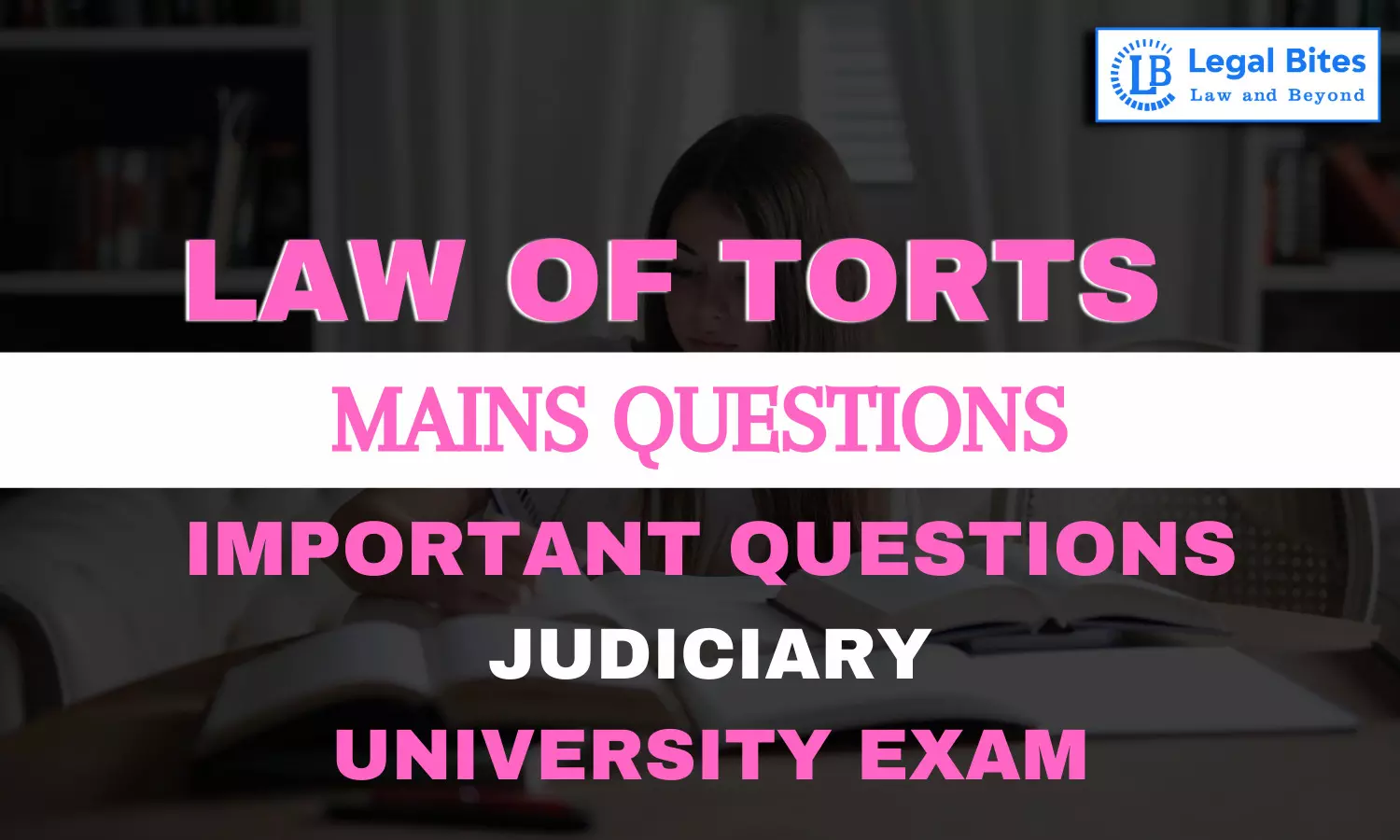Distinguish between tortious and contractual liability.
Find the question and answer of Law of Torts only on Legal Bites.

Question: Distinguish between tortious and contractual liability. [BJS 2021]
Find the question and answer of Law of Torts only on Legal Bites. [Distinguish between tortious and contractual liability.]
Answer
Tortious liability and contractual liability are two different forms of legal liability that can arise in different circumstances. Tortious liability refers to a person's legal responsibility for causing harm to another person, regardless of whether there was a contract in place. This type of liability arises from a tort, which is a civil wrong that is not based on a contract. Some common torts include negligence, battery, and defamation.
For example, in the landmark case of Donoghue v. Stevenson, [1932] UKHL 100, the defendant was held liable for tortious liability after he served a ginger beer containing a decomposed snail to the plaintiff, which made her ill. The court held that the defendant owed a duty of care to the plaintiff to take reasonable care to ensure that the product was fit for consumption.
On the other hand, contractual liability refers to a person's legal responsibility for a breach of contract. A contract is a legally binding agreement between two or more parties, and a breach of contract occurs when one of the parties fails to perform their obligations under the agreement.
For example, in the landmark case of Parker v. Taswell, [1858], the defendant failed to deliver the goods that he had agreed to supply to the plaintiff under a contract. The court held that the defendant was liable for contractual liability because he had breached his obligations under the contract.
Tortious liability arises from a civil wrong, while contractual liability arises from a breach of contract. The two forms of liability are distinct and can exist independently of one another.

